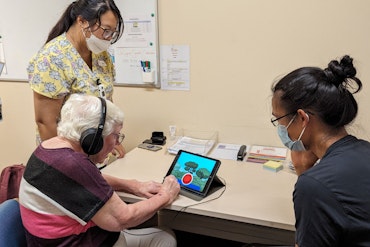One in 10 people in Japan is over 80 y.o. — will Australia get there?
What does new data from Japan mean for Australia’s future?
![<p>New data released by the Japanese Government on September 17 painted a picture of Australia’s future. [Mahathir Mohd Yasin via Shutterstock]</p>](https://agedcareguide-assets.imgix.net/news/articles/wp/Japanold__1909_01.jpg?fm=pjpg&format=auto&w=550&q=65)
New data released by the Japanese Government on September 17 painted a picture of Australia’s future. [Mahathir Mohd Yasin via Shutterstock]
Key points:
- Women comprised 56.6 percent of Japan’s older population — 20.5 million — compared to men, of which there were 15.7 million
- The dementia prevalence rate in Japan is expected to hit 25 percent in people over the age of 65 within the next 25 years
- People aged 65 or older accounted for 29.1 percent of Japan’s population
New findings, announced by the Japanese Government, have offered statisticians and economists insight into the future of Australia’s ageing population.
Japan’s Ministry of Internal Affairs and Communications revealed that people over the age of 80 years comprised 10.1 percent of the national population. The record-breaking data followed the Australian Treasury’s Intergenerational Report 2023.
The impact of Australia and Japan’s older populations on each economy indicated that Australia’s future workforce will be older and likely work longer, provided the trending birth rate and life expectancies continue.
According to data from the Japanese Government, the number of working persons above age 65 has increased year-on-year for 19 consecutive years
Over a quarter of all older people in Japan were in work in 2022 — bringing the total older working population to 9.12 million or 13.6 percent of the national workforce.
According to the National Institute of Population and Social Security Research, the proportion is expected to reach 34.8 percent in 2040, with Japan’s gig economy on the rise. Nearly three-quarters of older people working in Japan were non-regular workers, such as part-time or contract workers.
In Australia, the share of the population aged 65 years and over is projected to increase from around 17 percent in 2022 – ‘23 to 23 percent in 2062 – ‘63.
The Intergenerational Report 2023 revealed that a larger share of women and older workers in employment, as well as greater take-up of part-time work among men, is projected to see the part-time employment share increase further to around 33 percent in 2062 – ‘63.
In an analysis conducted by the University of Wollongong in July, 2023, a study of 10,000 middle-aged Australians over the past two decades found that Aussies were living and working longer.
UOW Statistics and Data Science Lecturer Kim Kiely said there’s an obvious reason to prolong people’s working lives — “[the reason is] to meet the challenges posed by population ageing and sustain the social security system.”
“Nevertheless, consideration should be made for inequalities in life expectancy and health expectancy. For many ageing workers, health limitations constrain their capacity and opportunity to work.
“To achieve longer working lives, workplaces will need [to] become more supportive of mature-age workers, including accommodating long-term health conditions.
This will likely involve addressing ageism in the workplace, increasing employer demand for older workers, creating appropriate work roles to fit the capacities and preferences of older workers, and providing pathways to lifelong education and training.”
Did these statistics change your thoughts on an early retirement? Let the team at Talking Aged Care know what you think our economy will look like! Subscribe to the Talking Aged Care newsletter for all of the latest information.























